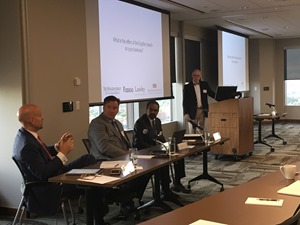
- This year at the Gartner Security & Risk Management Summit in National Harbor, MD there was a lot of focus on reducing business risk through improved cybersecurity that focuses on protecting data as users create and share it. One area of concern to many organizations is how to find and protect sensitive data without impacting how employees and customers work. Data protection regulations, like GDPR, are making things more complicated, but companies need to...
- This year at the Gartner Security & Risk Management Summit in National Harbor, MD there was a lot of focus on reducing business risk...




